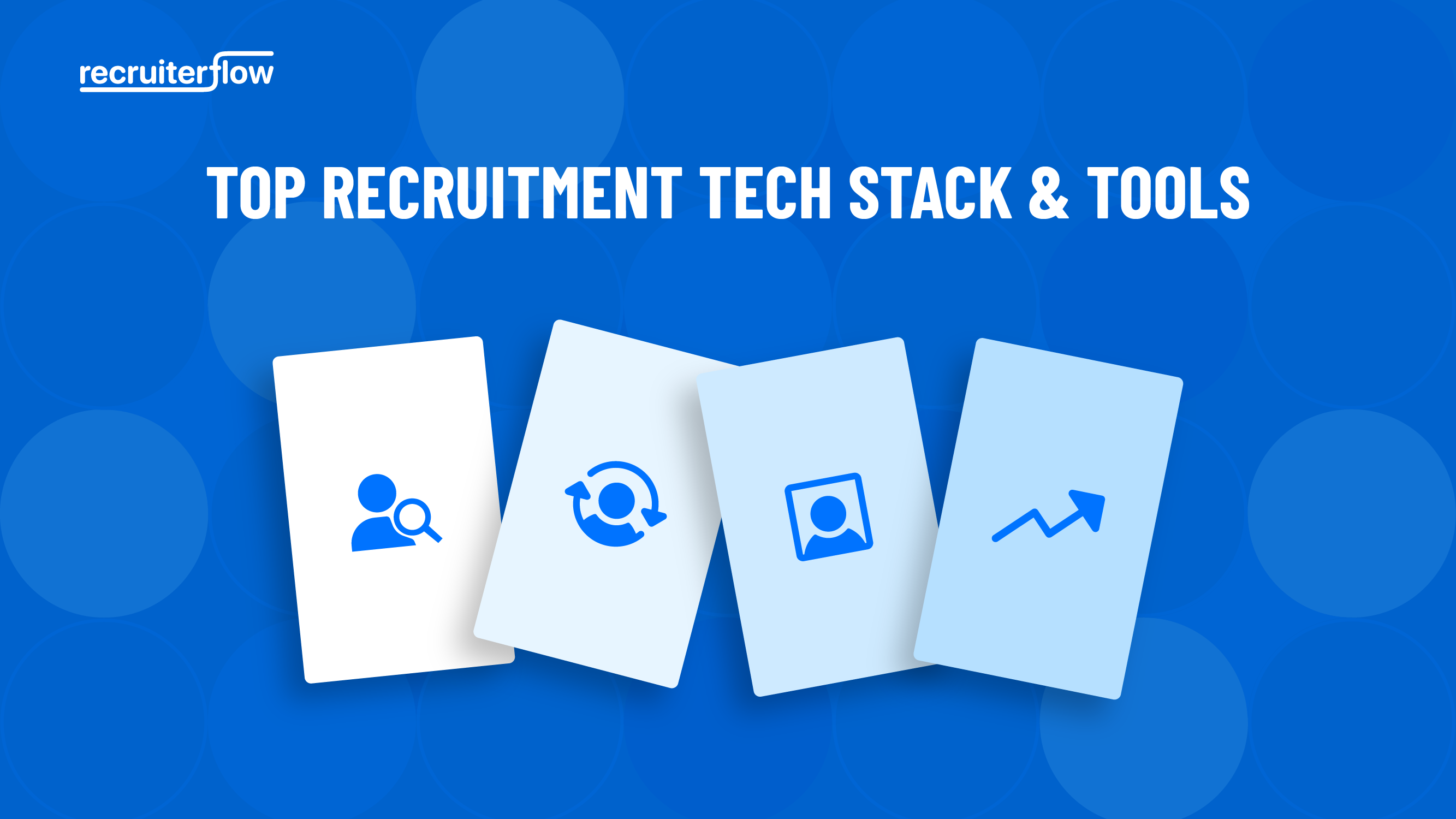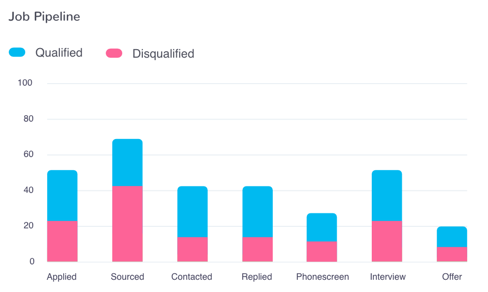
4 Insights analytics can deliver from your recruitment analytics software

Recruitment is a candidate’s market right now. Recruiting and retaining brilliant talent is getting harder than ever. Those difficulties go beyond just finding the right person for the specific opening you have.
What about candidates who are well-suited to your company, not just to your current positions? Keeping track of those candidates, as well as all the others you’re considering, gets confusing.
A key benefit of using an ATS (like Recruiterflow) is that you can easily unearth insights into your recruiting process. Knowing how your recruitment process works and getting data on what’s going well and where improvements can be made helps with retention.
So what key insights can an ATS solution identify at your workplace?
-
Find and solve hiring bottlenecks
Bottlenecks in the hiring process lead to lost time and productivity. They slow down your search for the best possible candidates. Figuring out where those bottlenecks are and how to fix them can streamline your hiring process.
One common bottleneck is a flood of unqualified candidates applying for a posting. You know to make the posting as clear as possible, but sometimes people who don’t meet the key requirements make it through. With your recruiting software, candidates can be sorted and removed from the job pool based on their qualifications, saving your hiring team time. After all, there’s no point in interviewing people who aren’t a good fit.
In addition, you can include knockout questions that’ll immediately eliminate candidates who answer incorrectly, further refining the hiring process.
You can also automate communication with candidates, setting up rules within the software for emails to both disqualified candidates and those you’d like to learn more about.
-
Discover which hiring managers need help
The hiring process is often unwieldy and involves many different people and departments. Getting all of those people on the same page about the position and job posting is hard enough. Once you find candidates, managing the team can feel almost impossible.
An ATS solution allows your entire team to use the same platform and be on the same page about what you’re looking for and which candidates have those qualities. You can also see which managers are behind on their hiring duties and which ones need additional resources to ensure the position gets filled.
This is especially helpful for first-time managers who might not have much experience with sorting through a range of candidates, scheduling and conducting interviews, or keeping track of which candidates are at what stage of the process. Because an ATS solution automates all of these aspects, those managers are able to breathe a little easier. As an added benefit, your more experienced managers can spend less time training new ones on how to conduct a job search and focus instead on their own tasks.
But we all know it’s not just inexperienced hiring managers who have trouble with the process. Other managers can be less flexible in the hiring process, which causes bottlenecks and slows down the search. Recruitment analytics allow you to see which managers are struggling and wherein the process they’re having trouble with, whether it’s selecting appropriate candidates for an interview or following up with them as necessary.
-
Track your hiring team’s efficiency and effectiveness
Because recruitment analytics take the entire hiring process into account, from the first time an applicant interacts with your company to the first day in the office, you can get a bird’s eye view of the process. You’ll be able to track how long your search lasts and your team’s efficiency, which can help you make improvements when you’re hiring for the next position.
Analytics don’t stop there, however. An ATS solution can help you track how new hires feel about their jobs and the organization overall, which provides a window to see whether the hiring team was effective and chose someone right for the position. This also ensures you’ll know about any obstacles right away, so you’re not caught off guard by negative feedback or employees looking to transition to different roles.
Also, an ATS solution can help you see where your process lags. If it’s due to issues with a specific manager, you’ll have solid data to back up your claims when discussing the problem. This data will make it more likely that the person will take you up on offers for help.
-
Determine your best sources for hires
The candidates you find are only as good as the places you’re looking, but recruitment analytics trends can make sure your sources are up to snuff.
Your team may think all the best candidates are coming from major job boards because that’s how it’s always been. But with the increase in social media use, candidates are coming from all over the place. You want to know where your candidates are finding open positions, and an ATS solution provides that insight.
If excellent candidates are coming from social media like Twitter or Facebook, you can reinvent your hiring strategies and devote more attention to those platforms. Seeing where you can cut back is also helpful – if fewer candidates are coming in from sourcing agencies or specific recruiters, you’ll want to spend less time on those.
Refining your sourcing also helps improve the efficiency of your team, since hiring managers might be struggling due to issues with sources rather than their own mistakes.
Knowing your company’s strengths and weaknesses when it comes to hiring is essential for making the best choices in new hires, and an ATS solution can help you figure those out.
No matter how quick and easy your hiring process may be, there’s always room for improvement. Using recruitment analytics gives you the tools to make positive changes and ensure only the best candidates are getting through to your organization.
About the Author
Kelsy Ketchum is an editor for Better Buys, helping companies find and select the right software solution. She enjoys writing about medical coding, human resources, and safety compliance.
Recruitment





Manan Shah